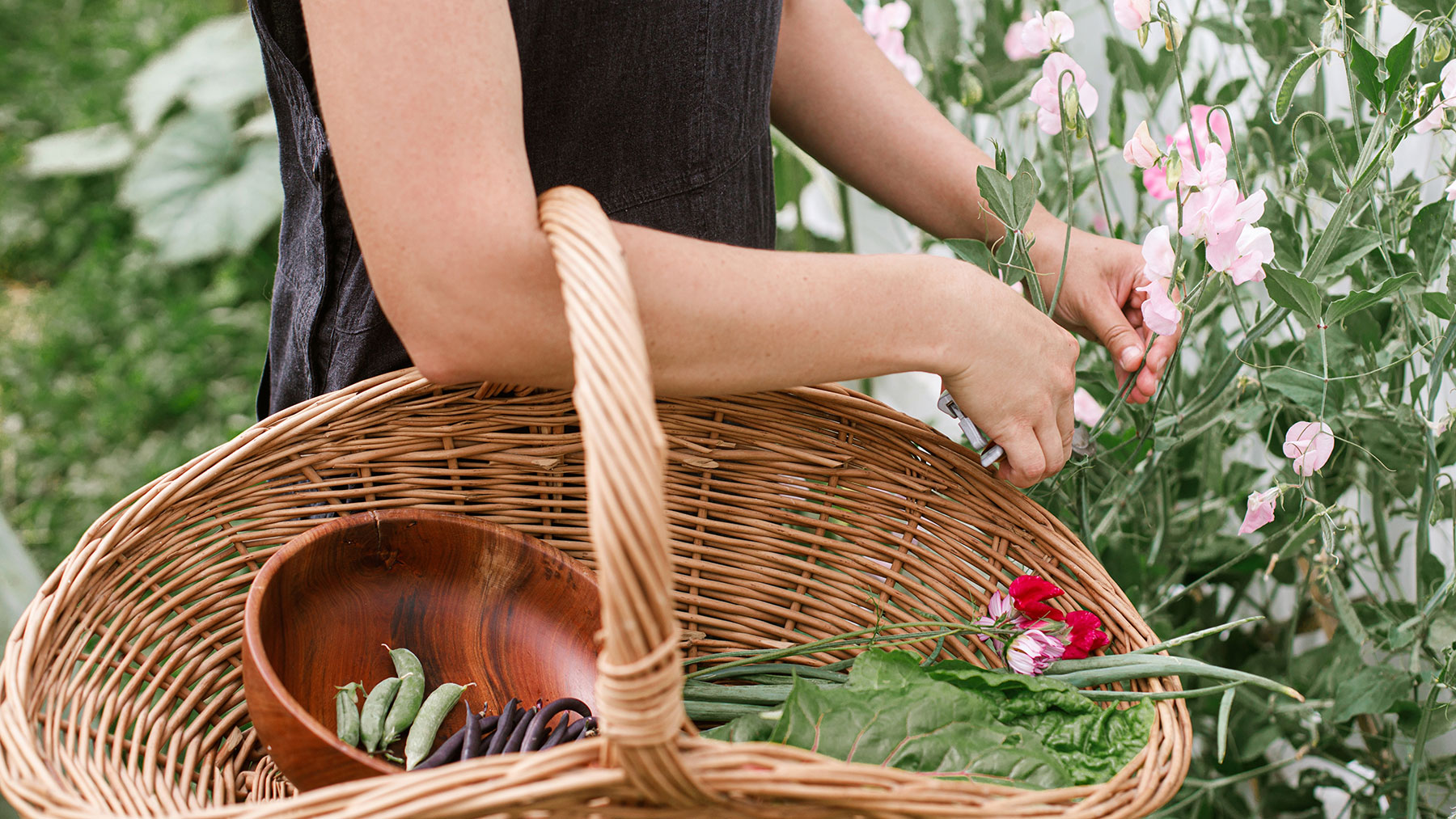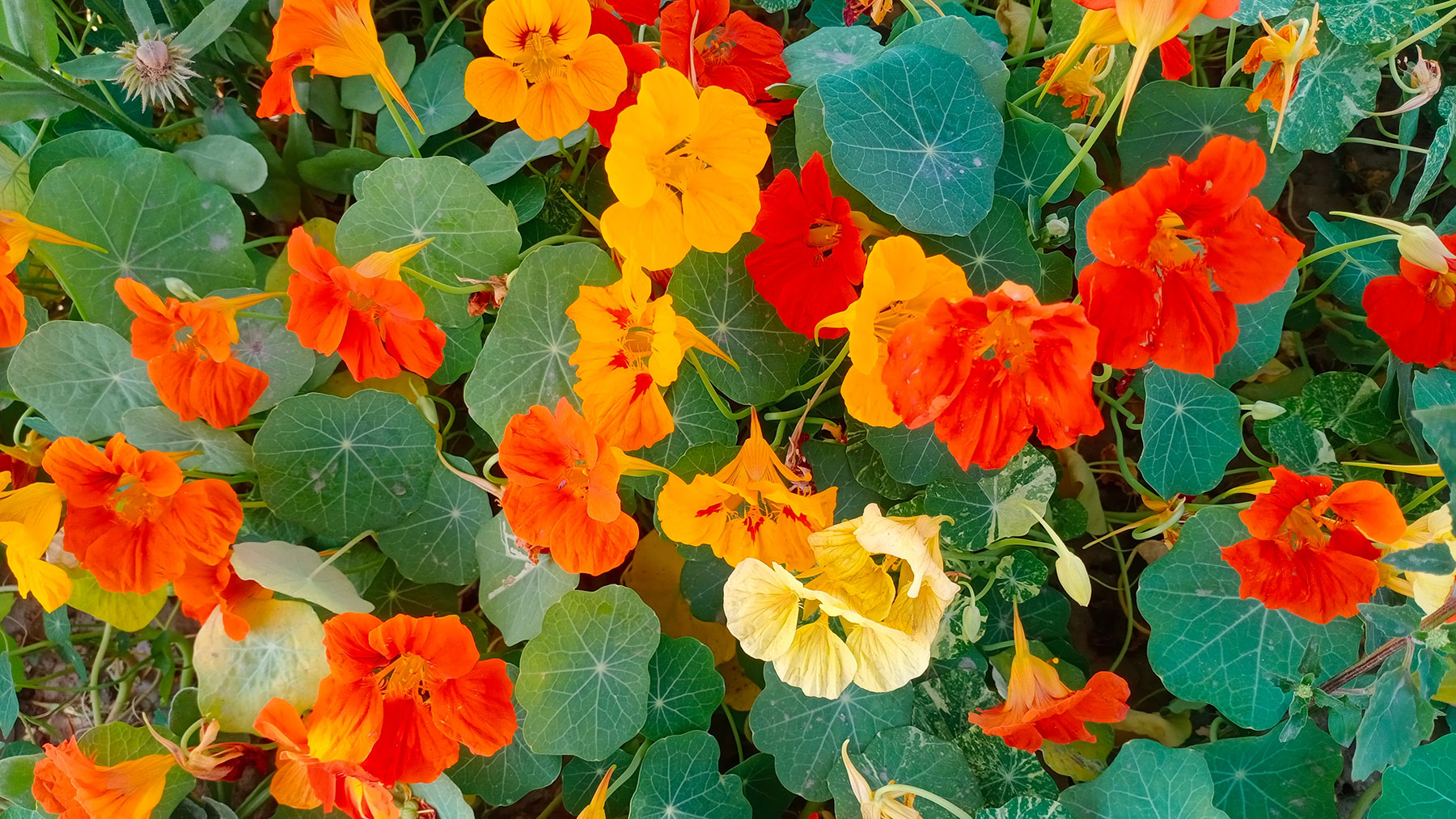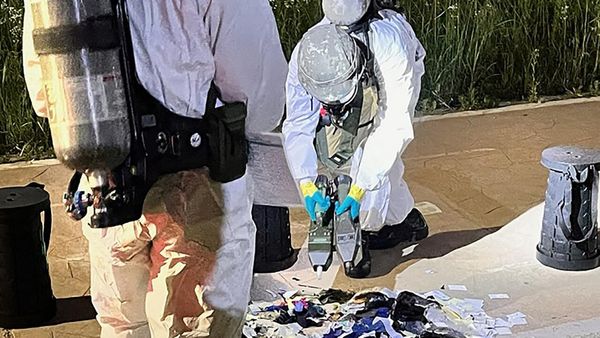
I always get excited when the first flowers bloom in the spring. There’s nothing like watching your garden come to life and seeing new growth after the dormancy of winter.
When I see the first bright yellow hues of daffodils emerging from their buds, elegant tulips forming a cascade of color, and delicate bluebells that thrive in my garden’s shady spots, I feel grateful that I have an outside space that I can admire every day.
Disappointment hits me when my spring flowers finish flowering, as I love the vibrancy of their blooms. But I soon regain my gardening mojo as I grab my best gardening gloves and start sowing flower seeds for summer blooms.
Here are my 3 favorite flower seeds to plant in May for a colorful array of summer flowers.
1. Nasturtium

The bright hues of nasturtiums add a real impact to a yard. But apart from adding a brilliant pop of color, with vibrant green foliage, they have many other benefits. They can beat the pests and the flowers are edible too. They are also favored among bees and are one of the plants that attract butterflies and other pollinators into your yard. So, if you not in favor of No Mow May and holding back from mowing your lawn for a month, you can still encourage wildlife into your garden.
I’m planning to use mine as a companion plant with my zucchinis, which are one of the vegetables I started to grow from seed earlier this month. I’m hoping that the nasturtiums will pull aphids and other garden nasties away from my freshly planted zucchinis so I won’t have to use any other type of prevention to keep pests away from my plants.
Nasturtiums are versatile plants which are divided into trailing and bush types. Trailing nasturiums are suitable for hanging baskets and window boxes, while bush types grow well in the ground and in containers. Personally, I favor bush types, as I plant them in the ground in my vegetable patch and within containers on my patio.
For a trailing nasturtium suitable to grow alongside pole beans, try 'Jewel' Mix. It's a hardy seed that is easy to grow.
How to sow nasturtium seeds
Nasturium seeds can be sown indoors or started off and planted straight into the soil outdoors. I’ve planted my outdoors as their roots can be delicate when transplanting, but I do have a problem with squirrels. They treat my garden as a playground and dig up any freshly bulbs and love scampering about in my container pots, unearthing any seeds.
If you start nasturium seeds off indoors they are best planted 2 to 4 weeks before your last spring frost, and outside they can be sown 1 to 2 weeks after your last spring frost. These dates will depend on your climate and the USDA Planting Hardiness Zone within which you live. I’m based in the UK, so despite a cold and wet April, I planted my nasturtium seeds outside in early May.
If planting outside, place the seeds about half an inch into the soil that’s previously been watered, spacing them about 8 inches apart. If sowing them indoors, place the seeds in individual pots.
Best planting conditions
Nasturtiums will perform best in full sun, but will also flower in partial shade, although they won’t flower as well. They prefer well-draining soil and don’t necessarily need any extra support unless your soil is particularly poor. If they receive too much nitrogen from feed you’ll end up with more foliage than flowers.
2. Sweet peas

Sweet peas can be considered an old fashioned plant, but they still have a much-deserved place in today’s garden. My father-in-law was an avid grower, and would often present me with a cut bunch to display indoors. Apart from looking pretty, with their delicate petals, they also have a sweet scent and a long-flowering season that makes them perfect for a cutting garden. Lathyrus odaratus ‘Matucana’ is well-known for it’s delightful scent.
Sweet Peas are a good first choice if you are new to growing flowers from seeds.
How to sow sweet peas
Similar to nasturtiums, it’s best to sow sweet pea seeds directly into the soil outdoors, as seedlings can suffer transplant shock, although not all gardeners report this issue. Start by digging in some compost to enrich and break up the soil, and apply some lime if your soil is acidic. Sweet peas do best in alkaline soil with a pH of around 7-8.
If you are keen to sow sweet peas indoors, they are best started in early spring, about 6 to 7 weeks before the last frost date, so check the dates that apply to you before sowing.
Place the seeds about one inch deep into the soil and cover. Sweet peas are prone to rot, so unless the weather is particularly hot, they won’t need watering at this point. Germination will take between 7 to 15 days.
If you are growing climbers rather than bush varieties, they will need support, so either plant them close to a trellis or add some canes to support their growth when you plant the seeds. I’m planning to grow mine with my pole beans in my vegetable garden, which has been staked with canes in the shape of a tepee.
Best planting conditions
Sweet peas do best in full sun with well-drained soil, although they prefer their roots to be shaded, so plant some other annuals around their base, such as pansies. Because of their delicate nature, especially if you are growing climbers, they are best protected from strong winds, so avoid planting them in an open position.
3. Cornflowers

Spring-to-summer flowering cornflowers replace the vibrant blue of spring bluebells in my yard, although they are available in other colorways! Often referred to as ‘Batchelor’s buttons’, although known by the botanical name Cenaurea cyanus, these flowers are good for first-timers as they are easy to grow.
Apart from the bright blue blooms, cornflowers are also available in white, pink, purple and burgundy, with some two-tone options. They are popular with pollinators and make a good choice in your cutting garden — they can last up to two weeks in a vase — and sit nicely alongside sweetpeas. However, adding a few to your vegetable patch will add a splash of color and keep pests off your veg. I particularly like how the thistle-shaped flower create a pleasing aesthetic in a garden.
For a traditional blue cornflower sow ‘Florist Blue Boy’.
How to sow cornflowers
Cornflowers are cool-climate flowers and can be planted before the last frost date. If your soil can be worked, it’s an indicator that you can sow your seeds. The seeds can even be sown in the fall if you are within USDA 7 or higher.
Cornflower seeds can be direct planted and don’t need to be started indoors unless you want to get ahead or have problems with naughty squirrels or birds pilfering your seeds! Begin by digging in some compost and raking over the soil. Then, sow your seeds ¼ inch deep, spacing them 2 inches apart, and cover them with soil. Give the seeds a light water until they germinate, which should take between 7 to 14 days.
Best planting conditions
Cornflowers do best in full sun, with sun afternoon shade in hotter climates, and favor rich, well-drained soil. They will only require added fertilizer if your soil is poor.







